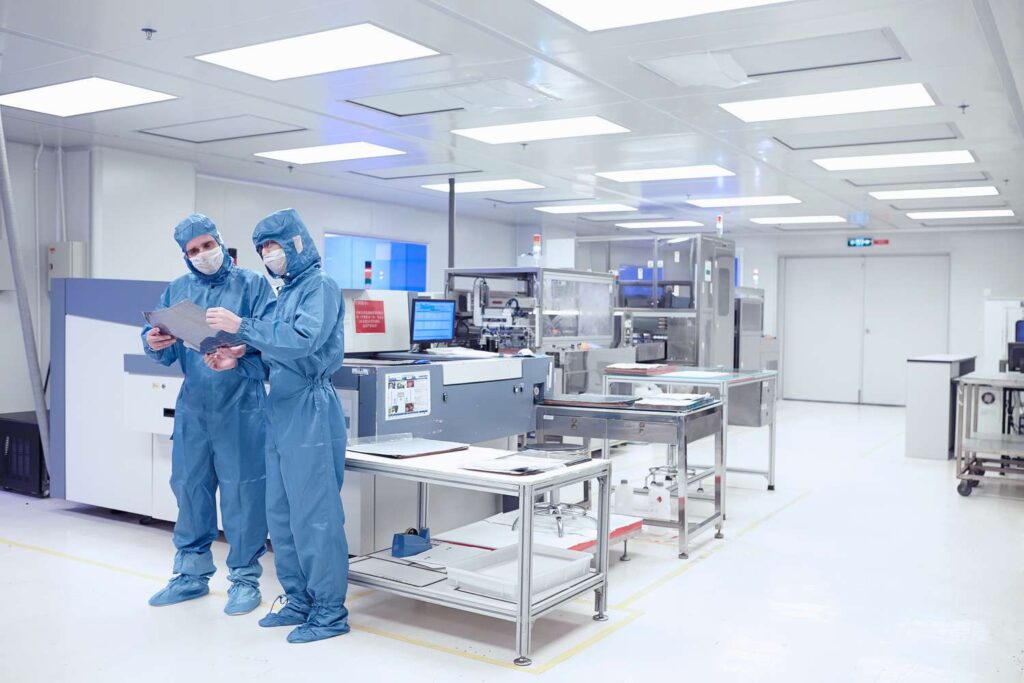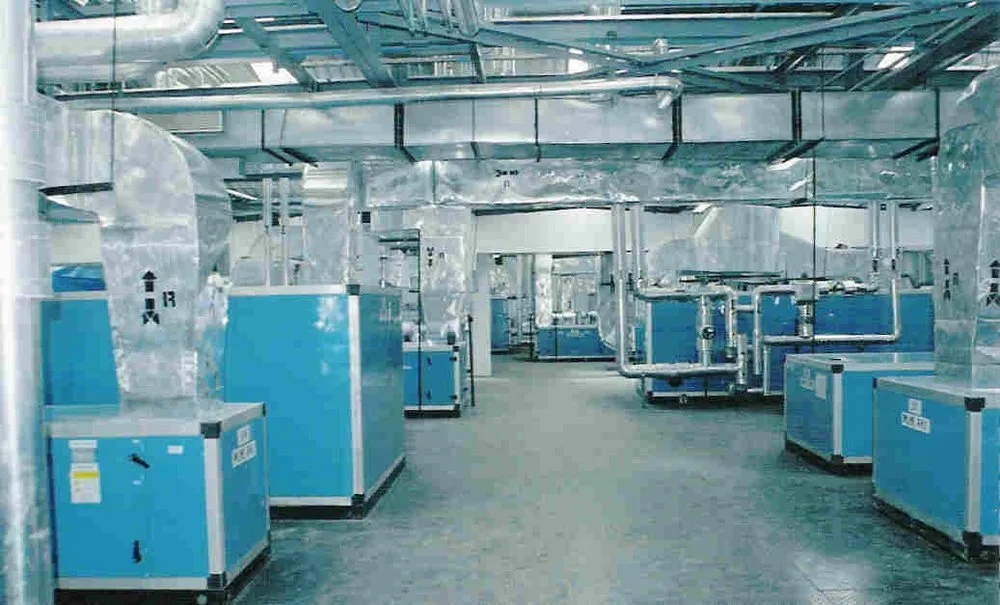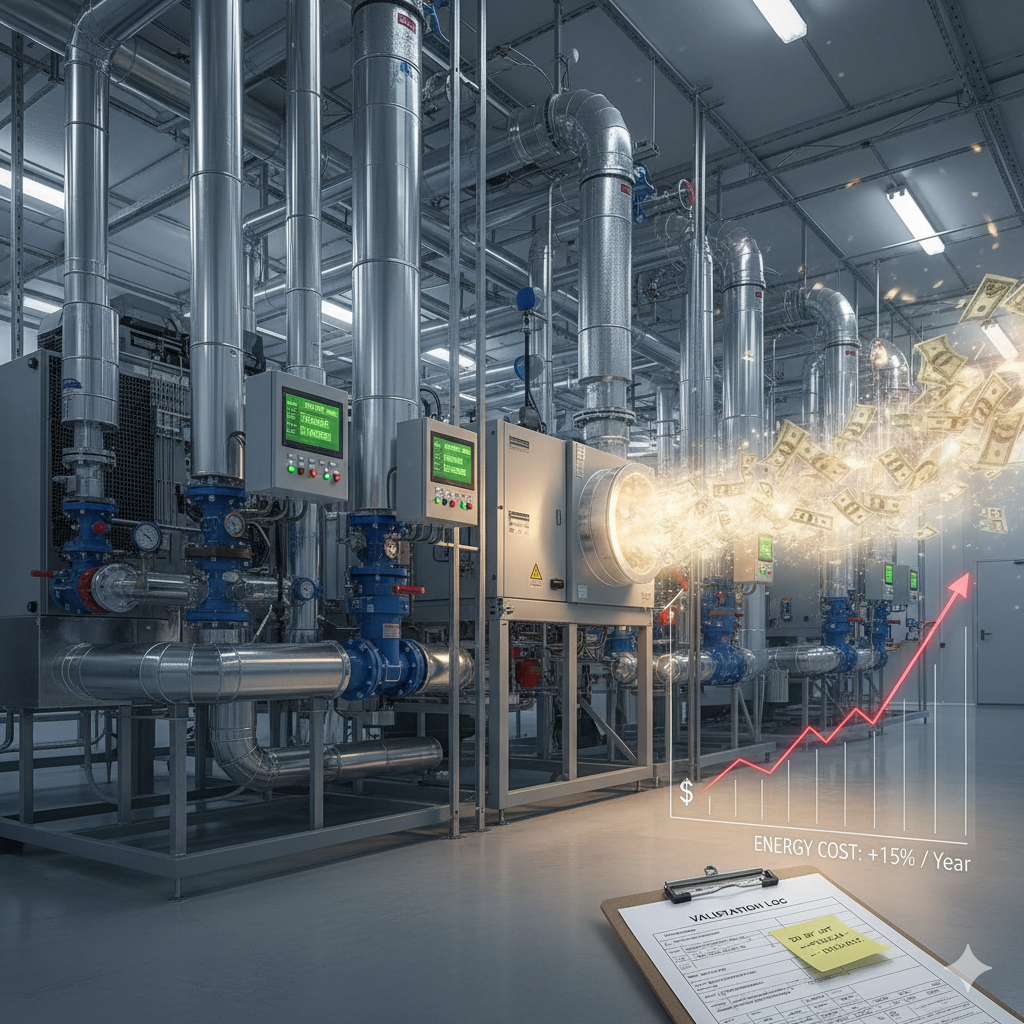I’ve seen a lot in my 35 years in Pharma Industry. From rudimentary facilities to world-class manufacturing plants, I’ve witnessed the incredible evolution of our industry.

But one thing has remained stubbornly consistent, often hiding in plain sight: the sheer amount of energy we consume, particularly in our HVAC systems.

I’ve witnessed our industry’s incredible journey, from basic setups to global manufacturing powerhouses. But this one figure, 60%, has remained a silent, persistent drain, often overlooked in the pursuit of compliance. It’s time we addressed this “60% Problem” head-on.
The 60% Problem
Walk into almost any pharmaceutical plant, especially those with critical cleanroom environments, and you’ll find an energy equation skewed dramatically. More than processing equipment, more than lighting, often more than everything else combined, your Heating, Ventilation, and Air Conditioning (HVAC) system is likely consuming well over half of your total energy.
Why HVAC Dominates Your Energy Bill
The reasons are deeply embedded in our operational DNA:
- Precision and Purity: GMP (Good Manufacturing Practices) isn’t a suggestion; it’s a mandate. We must control temperature, humidity, and particulate levels with absolute precision to ensure product quality and, critically, patient safety.
- Constant Air Changes: Achieving sterile environments requires immense airflow. Did you know? A typical pharma cleanroom can require 20–30 times more air changes per hour than a hospital operating theatre. This constant air movement, filtration, heating, and cooling is incredibly energy-intensive.
- Round-the-Clock Operation: Most pharma HVAC systems run 24/7, often at peak design loads, irrespective of actual occupancy or demand.
The Compliance Paradox
In our unwavering commitment to regulatory adherence, we’ve often fallen into a “compliance paradox.” To mitigate risk, systems are frequently:
- Over-engineered: We build in significant redundancies and capacities, ensuring we always stay within parameters, even if it means running far beyond actual need for much of the time.
- “Validation-Locked”: Once a system is validated, the thought of altering it for efficiency sends shivers down the spine. The perceived cost and complexity of re-validation often overshadow potential energy savings.
The Illusion of Control vs. Reality of Waste
For too long, energy consumed by HVAC has been seen as an unavoidable cost, a “necessary evil.” I’ve been in countless meetings where the fear of compromising a validated state stalled any discussion about optimization. The prevailing wisdom: “If it’s validated and working, leave it alone. The cost of re-validation far outweighs any energy savings.”

This mindset, while well-intentioned, has allowed our most critical environmental control system to become our biggest energy guzzler. In some Indian facilities, the HVAC alone consumes more energy than the rest of the plant combined.
The Hidden Costs Beyond Money
The ramifications extend far beyond just your utility bill:
- ESG (Environmental, Social, and Governance) Scrutiny: When investors, regulators, and even customers are asking for ESG data, your HVAC energy footprint is not just a utility issue—it’s a boardroom issue.
- Operational Fragility: Overworked, inefficient systems are more prone to breakdowns, leading to costly downtime, product deviations, and potential regulatory headaches.
- Stifled Innovation: Clinging to outdated, inefficient methods means missing out on advanced technologies that offer superior control with significantly less energy.
Turning a Liability into an Asset
Here’s the powerful truth: this 60% isn’t a fixed destiny. It represents your single largest opportunity. Your HVAC system, precisely because it’s so critical and so energy-intensive, holds the greatest potential for cost savings, enhanced sustainability, and improved operational efficiency. It’s not just a liability; it’s your biggest untapped asset.
The solution isn’t to compromise validation, but to leverage smart, data-driven optimization that respects, and even enhances, your validated state. We must shift from a mindset of passive acceptance to one of proactive, intelligent management.
Teaser: HVAC may be the loudest energy guzzler, but lurking in the background is a system that quietly drains megawatts every single day.
In Episode 2, we’ll expose “Chillers: The Cold Truth Behind Pharma’s Energy Bills.”


Excellent Read Varun. Its coming from you makes it more special.
Regards
Byrne
Thank you, Byrne
BR